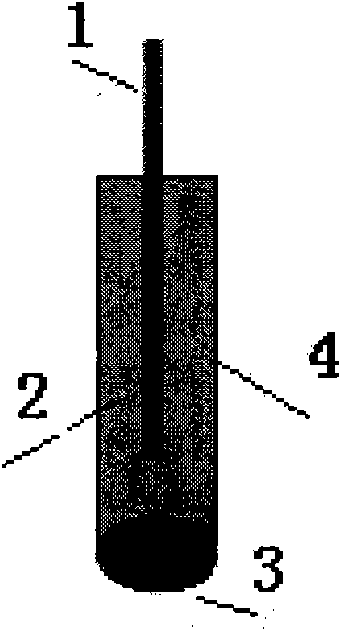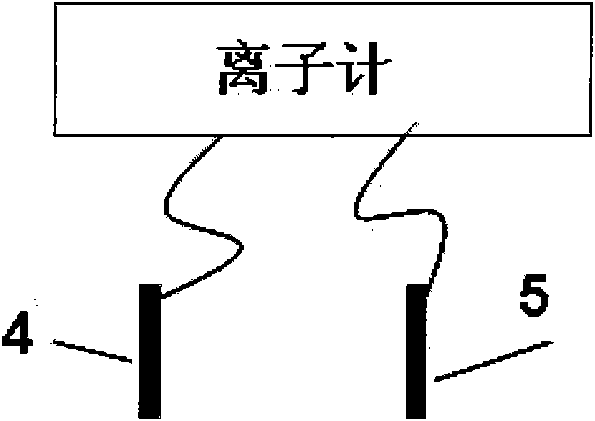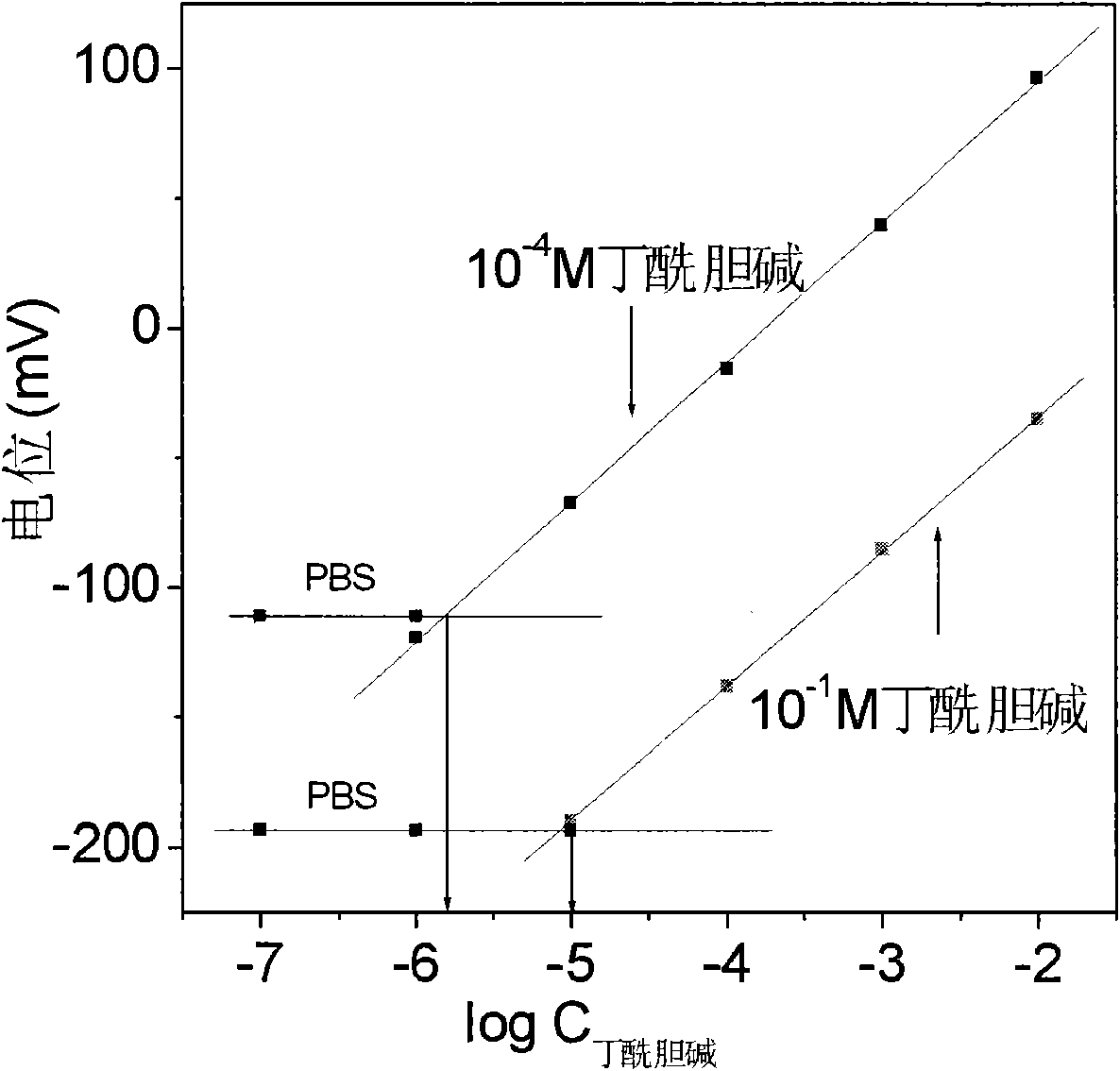Method and device for detecting organic phosphorus pesticide
A technology for organophosphorus pesticides and detection methods, which is applied in the direction of measuring devices, instruments, and material analysis through electromagnetic means, which can solve problems such as cumbersome operations, and achieve the effects of simple preparation, improved sensitivity, and easy automation
- Summary
- Abstract
- Description
- Claims
- Application Information
AI Technical Summary
Problems solved by technology
Method used
Image
Examples
Embodiment 1
[0028] Take the organophosphorus pesticide-parathion in water tested by this electrode as an example. Its determination steps are as follows:
[0029] a. Use the ion-selective electrode as the working electrode, the saturated calomel electrode as the reference electrode, and the PXSJ-216L ion meter to measure the potential value; the ion-selective electrode 4 and the saturated calomel electrode 5 are connected to the PXSJ-216L ion meter (see figure 2 ). Insert the ion selectively into the measuring cell filled with 0.03U / mL butyrylcholinesterase, use the butyrylcholine exuded from the inner filling liquid during the electrode detection as the substrate, and record the potential value at eight minutes, Measure the potential value -130.1mV, and record the electrode potential value as a control signal. The ion selective electrode 4 (see figure 1 ) is inserted with an Ag-AgCl internal reference electrode 1, and at the same time inject 0.01mol / L butyrylcholine filling solution ...
Embodiment 2
[0037] Firstly, tap water was taken to configure two spiked samples, the concentration of which was 0.5ng / ml and 2ng / ml, and the Li potential difference was measured according to the above steps b and c, compared with the standard working curve (such as Figure 6 ) calculates corresponding concentration, and the recovery rate of standard addition of mensuration is respectively 101% and 98%; Wherein inner filling liquid butyrylcholine is 10 -6 mol / L.
Embodiment 3
[0039] a. The ion selective electrode is used as the working electrode, the saturated calomel electrode is used as the reference electrode, and the PXSJ-216L ion meter is used to measure the potential value. Insert the ion-selective electrode into the measuring cell filled with 10mLpH=7.4 0.02mol / L phosphate buffer solution, use the inner filling liquid seeped out during the electrode detection as the substrate, and measure the potential at eight minutes after the electrode has calmed down. The potential value is -122.3mV; the filling liquid butyrylcholine is 10 -4 mol / L.
[0040] b. Insert the ion-selective electrode into the measuring cell filled with 10mL pH=7.4 0.02mol / L phosphate buffer solution and 0.06U / mL butyrylcholinesterase quasi-solution, and use the inner filling liquid that seeps out when the electrode detects As a substrate, the potential generated after being stabilized for eight minutes is -133.7mV. The electrode produces different potential drops at differen...
PUM
| Property | Measurement | Unit |
|---|---|---|
| diameter | aaaaa | aaaaa |
Abstract
Description
Claims
Application Information
 Login to View More
Login to View More - R&D
- Intellectual Property
- Life Sciences
- Materials
- Tech Scout
- Unparalleled Data Quality
- Higher Quality Content
- 60% Fewer Hallucinations
Browse by: Latest US Patents, China's latest patents, Technical Efficacy Thesaurus, Application Domain, Technology Topic, Popular Technical Reports.
© 2025 PatSnap. All rights reserved.Legal|Privacy policy|Modern Slavery Act Transparency Statement|Sitemap|About US| Contact US: help@patsnap.com



